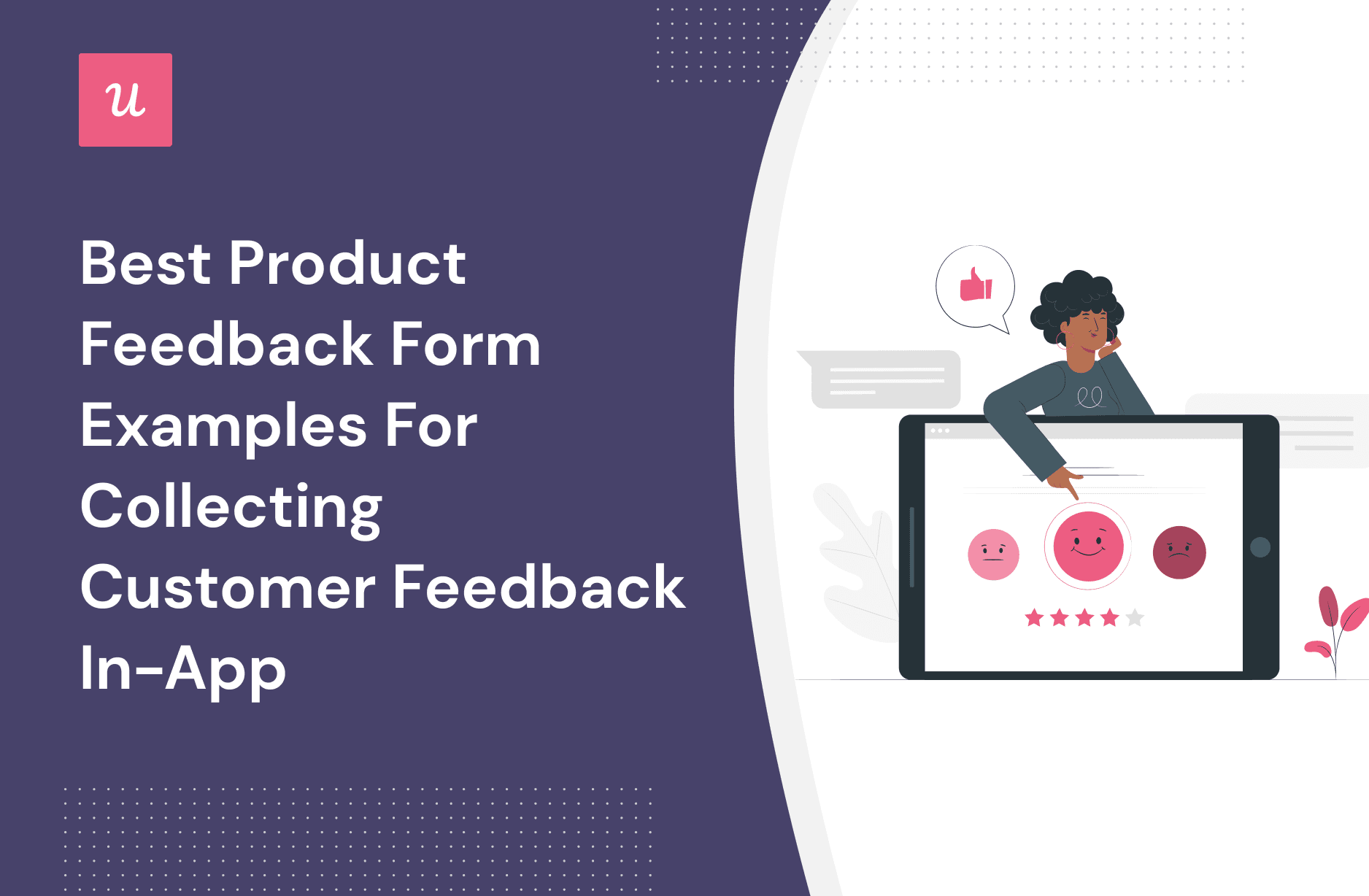
Best Product Feedback Form Examples For Collecting Customer Feedback In-app
Try Userpilot Now
See Why 1,000+ Teams Choose Userpilot

What is a product feedback form?
A product feedback form is a short survey that is used to collect insights on your product. You can collect user experience feedback, user sentiment, or customer satisfaction insights and use the data to make product improvements.
What’s your biggest challenge with your current product feedback form?
Understanding your main pain point helps us guide you to the right solution.
How are you currently gathering most of your product feedback?
This tells us about your current feedback channels and their limitations.
What is your primary goal for improving your product feedback form strategy?
Knowing your goal ensures the solution aligns with your business objectives.
You need more than a static form. You need a feedback system.
Based on your answers, a contextual, in-app product feedback form is the key to unlocking actionable insights and improving your user experience. See how Userpilot can help you build code-free, targeted surveys that get results.
Why is it important to use a good feedback form?
It’s not just when you trigger a survey but also how you design it and what you ask. These will all impact the results and the data you collect.
When your survey is easy to fill and asks the right question at the right time, you automatically collect more insights and have more relevant data.
Best practices for building a good product feedback form
Observing the best practices of collecting customer feedback allows you to gather more responses that provide better insights about your product.
Collect feedback intentionally
Your feedback form must serve a purpose for it to be effective. Without one, it won’t yield your desired responses to improve your product as you will not know what to ask your users.
Once you have a strategy for your form, you must only ask one to two questions to get increased response rates.
Trigger your surveys contextually
When you ask for feedback is just as important as what question you ask.
For instance, triggering a Net Promoter Score (NPS) survey before users reach the activation point is going to be out of context as users can’t share an opinion of a product they haven’t really used.
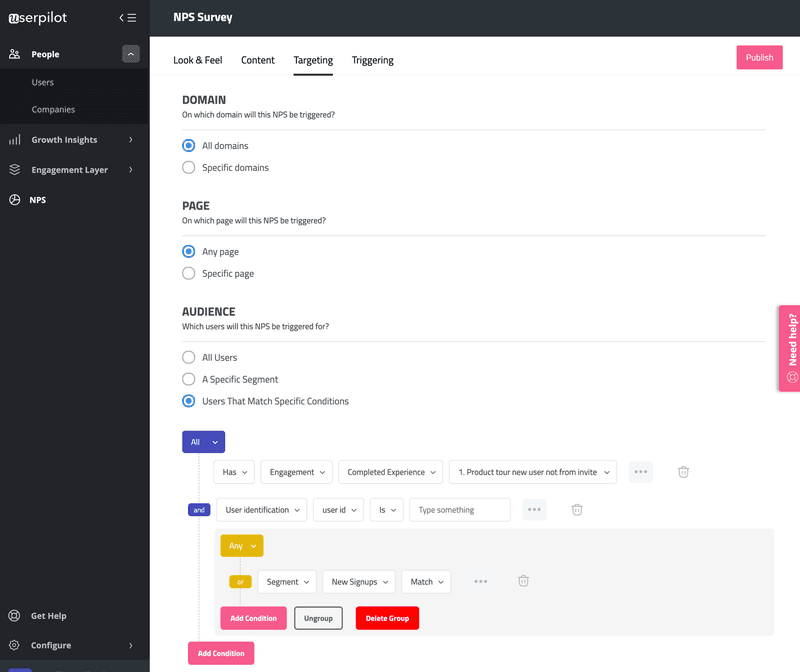
Collect qualitative data too
Quantitative data like the NPS above help you set benchmarks for your customer satisfaction or loyalty.
Qualitative data will give you the why behind a specific score or feedback you get.
It allows customers to explain to you the reason for their answer. You can then use the information they provide to improve your product.
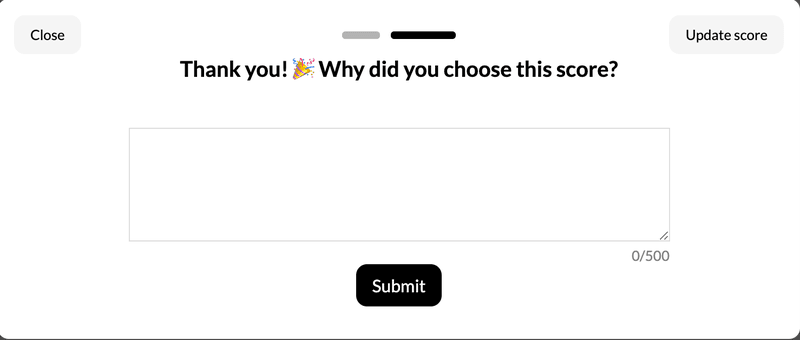
Use a mix of active and passive feedback forms
Active feedback forms are in-app surveys triggered by you based on user activity or other criteria you decide is relevant. Users have no control over these.
Passive forms are those that users can access on demand if they want to leave feedback on their own.
The former is your conscious effort to get feedback from customers. The latter is an invitation for customers to provide feedback without you asking for it.
Having both improves your feedback management system by decreasing the friction existing between the ability for users to share feedback and your organization to collect it.
To jumpstart your passive feedback initiative, add a small form on all your pages that users can interact with at any time.
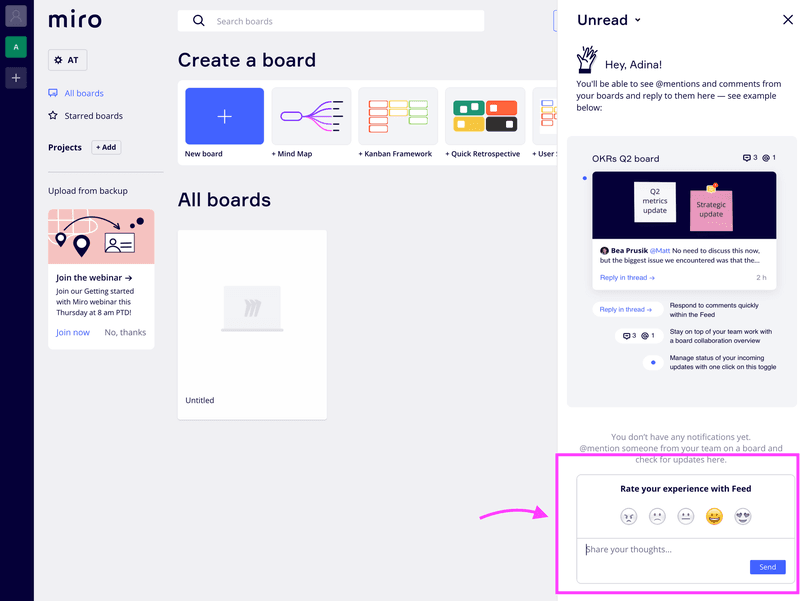
Use multiple channels when collecting feedback
Contextual in-app surveys are great for asking short and on-point questions to customers. But you might also want to use long-form surveys if you’re looking to collect more comprehensive answers.
More importantly, you should consider using them across different channels:
- Website feedback form – Collect data of repeat visitors from your product page, asking what’s stopping them from signing up.
- Chatbot feedback form – Set up a chatbot to understand a user’s customer experience after talking with your support team.
- Email – Send long-form or feedback surveys to a user’s email after a personal interaction.
- Public roadmap – Collect feedback from people regarding the upcoming features or allow them to suggest their ideas.
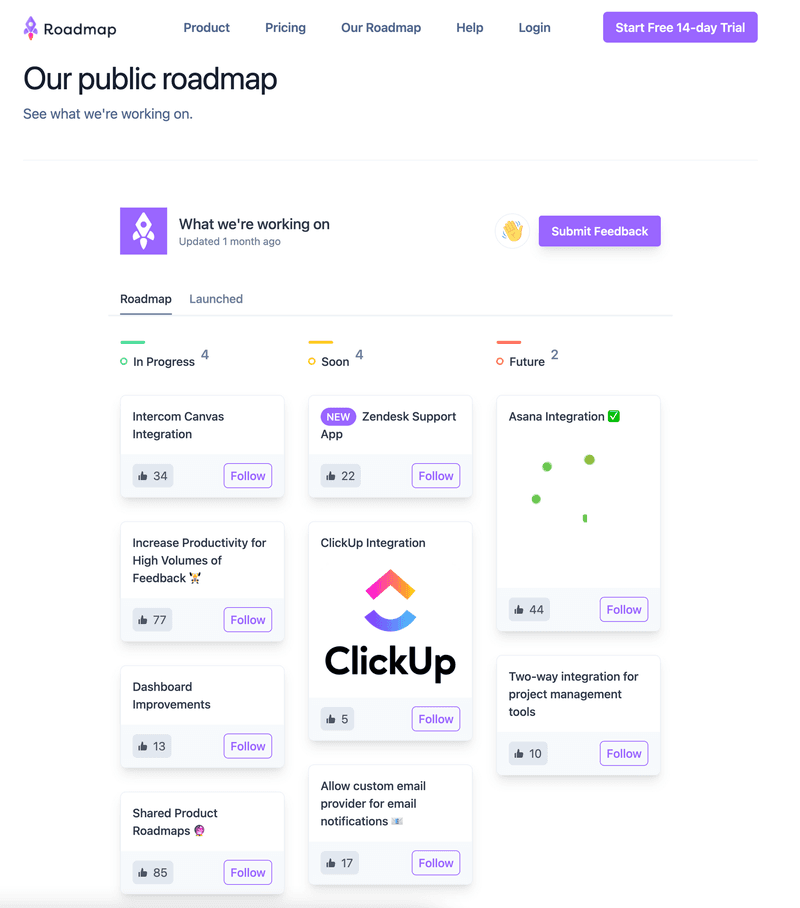
Avoid asking biased questions
When asking survey questions, you want customers to share how they feel, not how you want them to feel.
Here’s an example of a biased question:
How happy were you with your experience?

Now, here’s an unbiased survey question:
How was your experience?

The former assumes that the customers had a positive experience with your product or business. If not, they won’t answer the customer survey because it doesn’t apply to them.
The latter allows customers to answer if they have a good or bad experience with your product. Even if you receive negative feedback, you can use it to improve your products so other customers don’t have to encounter the same experience.
Product and customer feedback forms questions to ask
So what questions can you ask your customers in your product feedback forms?
Use multiple choice questions or a scale of 1 to 10 (10 being the highest) and add open-ended ones for more insights. Here are some examples.
Understanding who your user persona is feedback form questions
- In one word or sentence, how would you describe [Product]?
- What’s the reason you choose us over our competitors?
- What’s your purpose for using [Product]?
- Which among our competitors did you consider before choosing us?
Product feedback and user experience questions
- How disappointed would you be if [Product/Feature] became unavailable?
- How do you feel about [Brand]?
- Rate your experience with [Feature]
- Send feedback to [Team/Us] (text-based)
- What score (out of 10) would you give [product]?
Customer support feedback form questions
- [Brand] made it easy for me to solve my issue (can be a yes-no question with a text field)
- How was my reply?
- If there’s anything you would change about how [Product/Feature/Support] works, what would it/they be?
- What rating would you give [Brand] concerning its support services?
- What score would you give [Brand] regarding its reliability?
Customer success feedback form questions
- How has your experience with our product been in the last x months? (scale)
- What are you working on right now, and how can [Product/Brand] help make this a success?
- What is the most significant benefit of [Product] for you?
- Would you renew your contract if [Brand] if you can? Why or why not?
Product feedback form templates for collecting feedback data
If you want to fast-track collecting customer data from your feedback forms, take heed of the unique templates below. We grouped them into these categories:
- Understanding your user persona
- User satisfaction and customer loyalty feedback
- Customer feedback forms for understanding user experience
- Feedback form template for collecting product feedback
- Cancellation survey feedback form templates for understanding why users churn
Customer feedback form template for understanding your user persona
If you want to ensure that your customers are in line with your user persona, take cues from the following form templates:
Kontentino – Welcome screen customer feedback form
Social media tool Kontentino caters to agencies and brands. To segment its user feedback collection, it asks three questions on the welcome page.
This helps them understand who their users are and they can then track how they actually use the product.
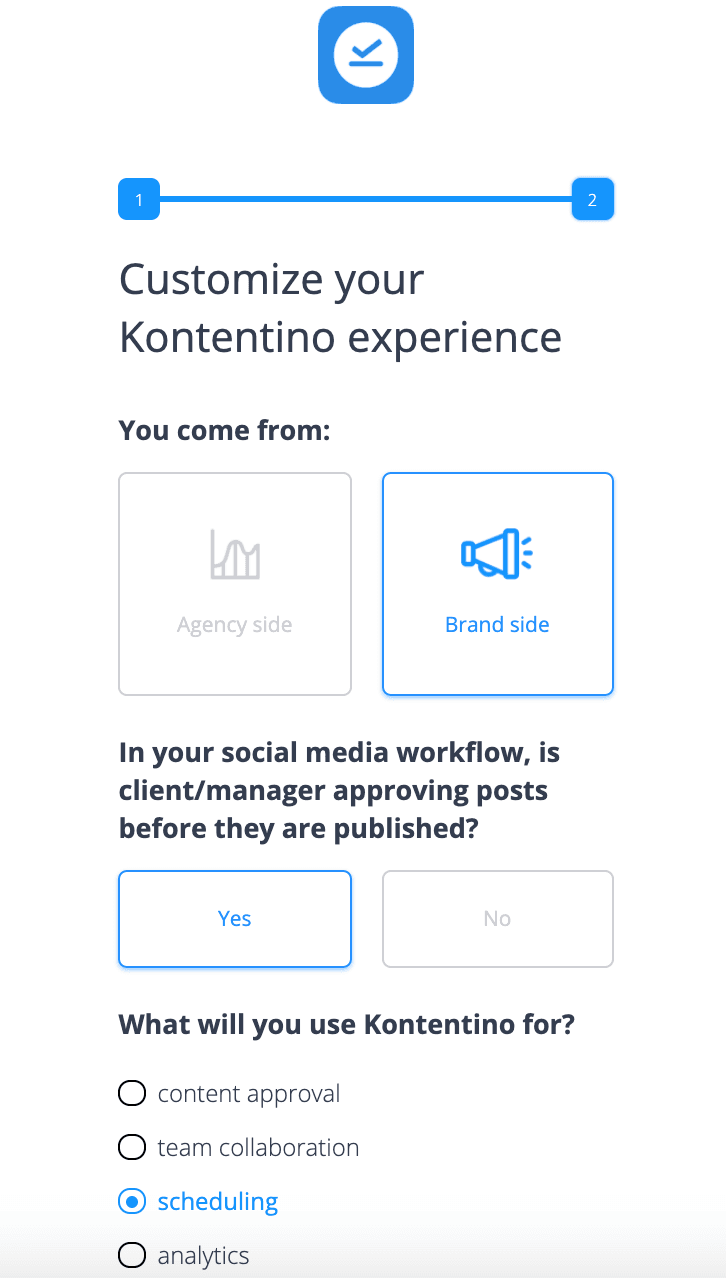
Linkgraph – Customer persona feedback form example
Link building software Linkgraph asks customers their goals for using your product as part of its feedback survey during the signup process, along with their respective budgets.
This data can be used to further improve the product onboarding experience.
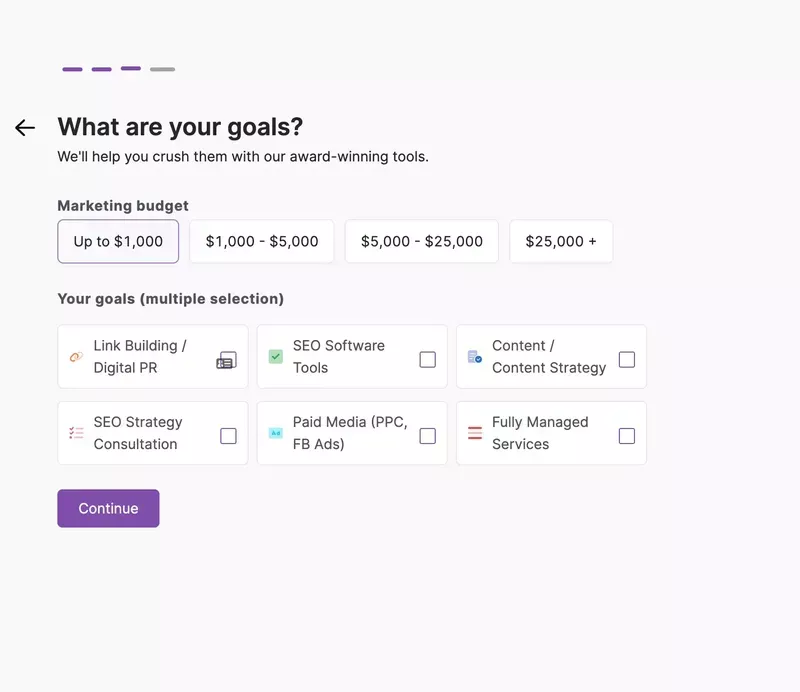
Miro – Customer feedback example at signup
Like Linkgraph, the visual collaboration platform Miro asks questions to customers as they sign up, and split the type of data they collect based on the user’s main goal.
What will you use Miro for?
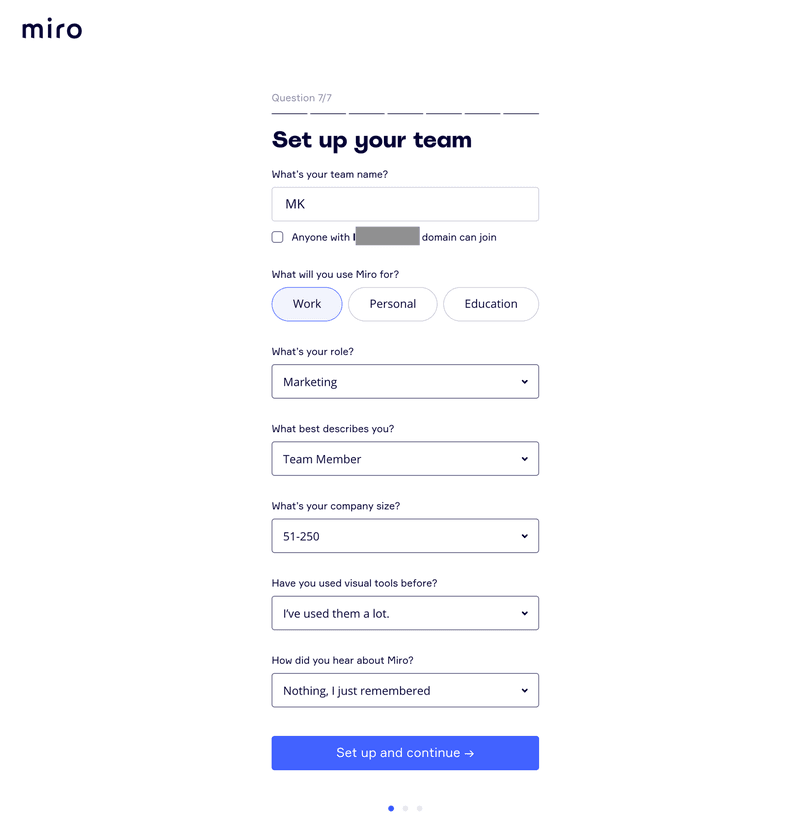
Customer feedback form template for understanding user satisfaction and customer loyalty
How satisfied your customers are will determine the chance of them staying on as users. Below are form templates to help you determine user satisfaction with your product:
Userpilot – Net promoter score (NPS) customer feedback form
Net promoter score (NPS) lets you understand the likelihood of users recommending your product to their friends and colleague.
With Userpilot’s NPS survey, you can automatically collect and analyze NPS feedback without having to code the survey from scratch.
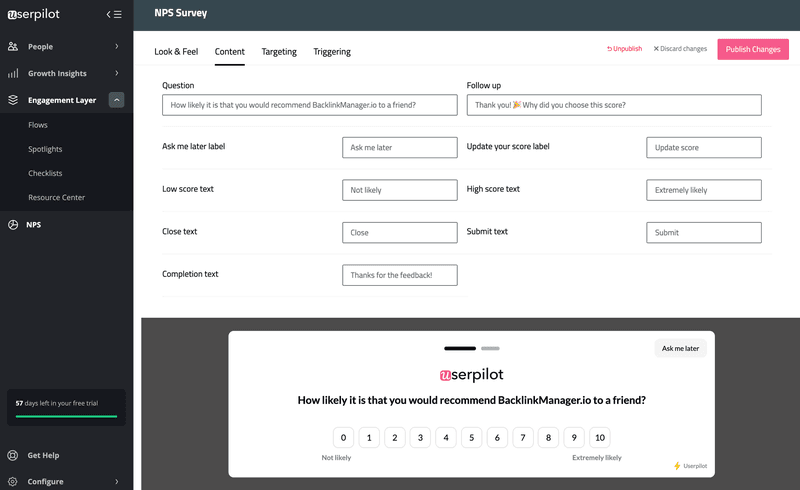
Nicereply – Customer satisfaction survey (CSAT) form
CX management platform Nicereply takes a simple yet effective approach to their CSAT survey.
It asks users to rate customer satisfaction based on the emoji that best describes their experience. There are only three choices, making the selection process much less complicated for users.
There’s also an optional section where users can type out the reason for their answers.
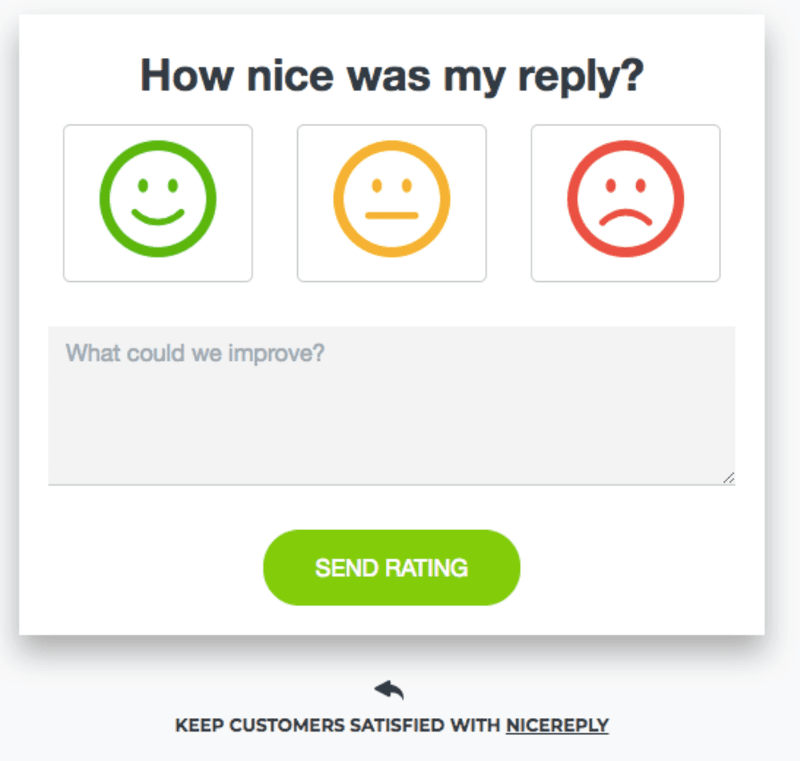
Product-market fit (PMF) survey
Product-market fit (PMF) surveys should be used to identify product-market fit at different stages of product growth.
You must keep testing if you have product-market fit, especially when developing new features and improving existing ones at an advanced rate.
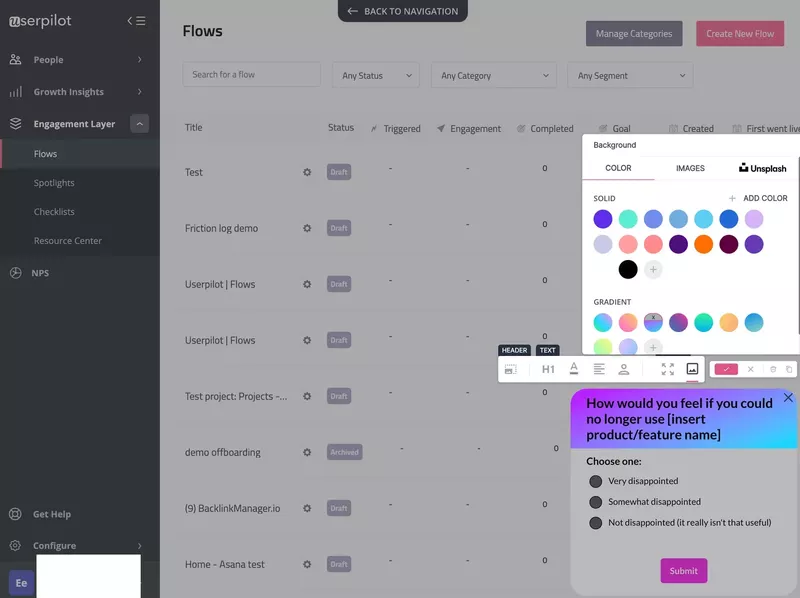
Customer feedback form template for understanding user experience
User experience (UX) is about understanding customer behavior and their feelings about the experience as they navigate your product. Below are form template examples to help you collect UX data correctly:
HubSpot – customer onboarding feedback form
A customer onboarding feedback form allows you to gather insights from new users about their experience with your product thus far.
HubSpot sends this survey to users in the middle of the onboarding process.
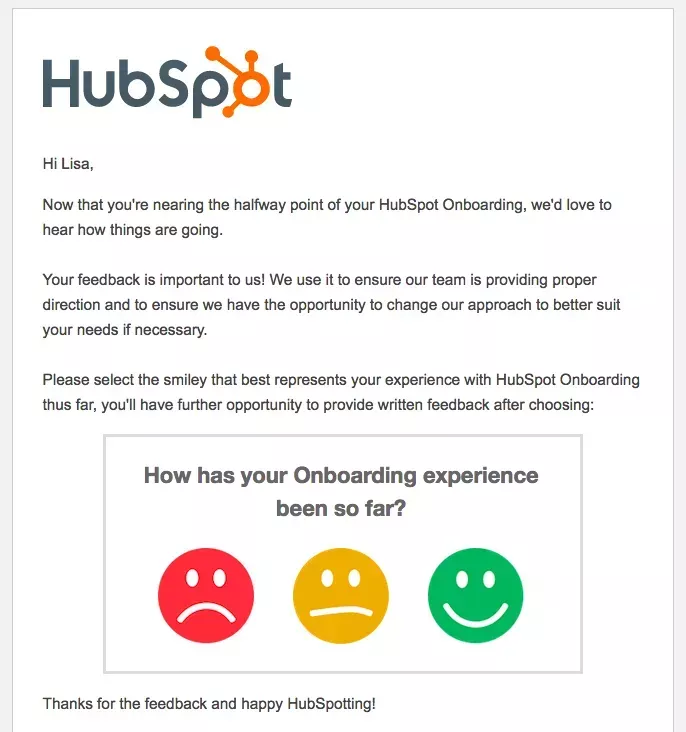
Customer effort score (CES)
Customer effort score (CES) gauges the perceived effort when performing a task.
Nicereply uses seven answer types to choose from so they can collect more granular data.
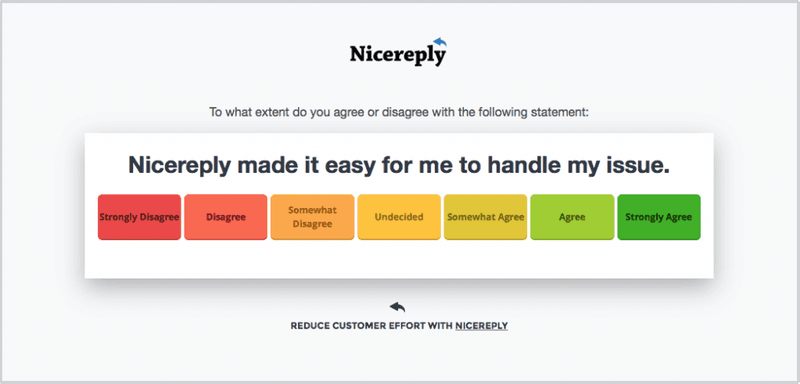
Postifity – trial-ending feedback form example
Social media tool Postfity sends out this survey before the user’s trial period ends. It helps the platform understand what’s keeping them from upgrading to a paid account.
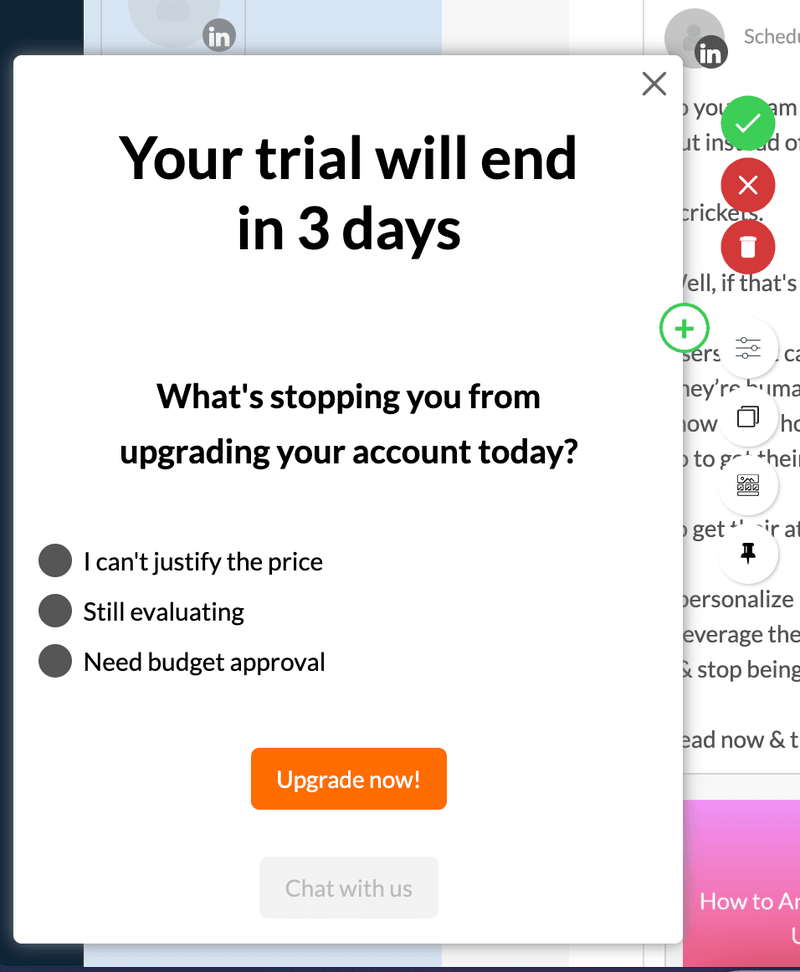
Customer feedback form template for getting product feedback
Getting feedback from people who used your product is a great way to skyrocket your product’s growth. Below are good feedback forms you can use as inspiration to collect this data.
Postfity – feedback form after launching a feature
When collecting feedback about its new feature, Postify sticks to something short, trying to understand how users actually use the new feature. The form includes a multiple-choice question and a text box to explain their answers.
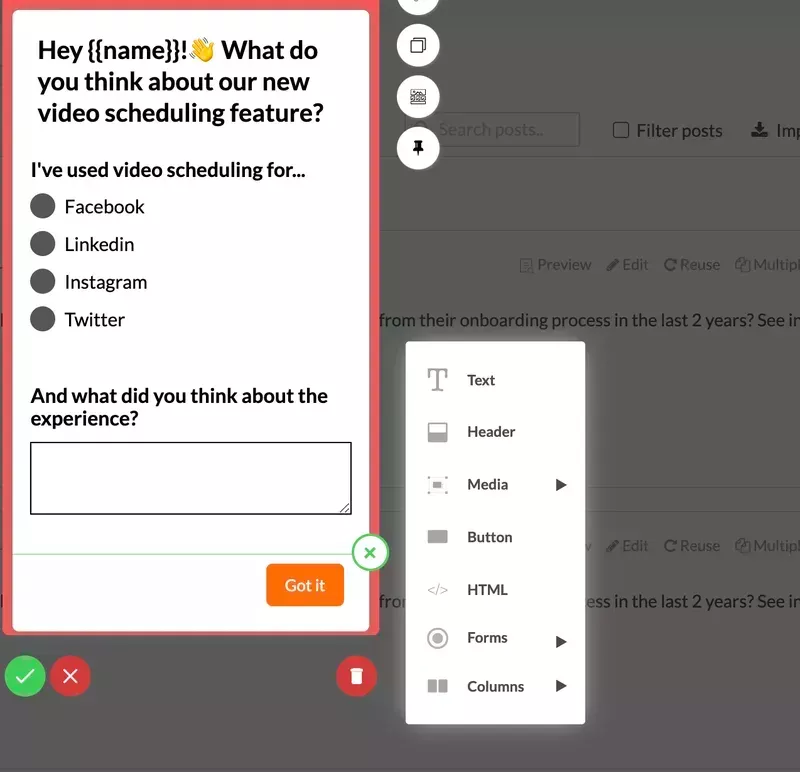
Slack – passive in-app customer feedback survey
Slack’s in-app survey is an example of how to collect quantitative and qualitative feedback the right way.
When you type ‘/feedback’ on the chat box, a small modal pops up.
The first part asks users how they feel about using the application and lets them choose from a selection of answers. This allows users to explain their answers in their own words.
Then, when you click on send feedback to Slack, the right side menu opens with an open-ended question where you can type your feedback.

Jira – specific feedback form for different features
Jira used small custom widgets across their UI. Users can choose which feature they want to give feedback on or reach out to customer support for a different request.
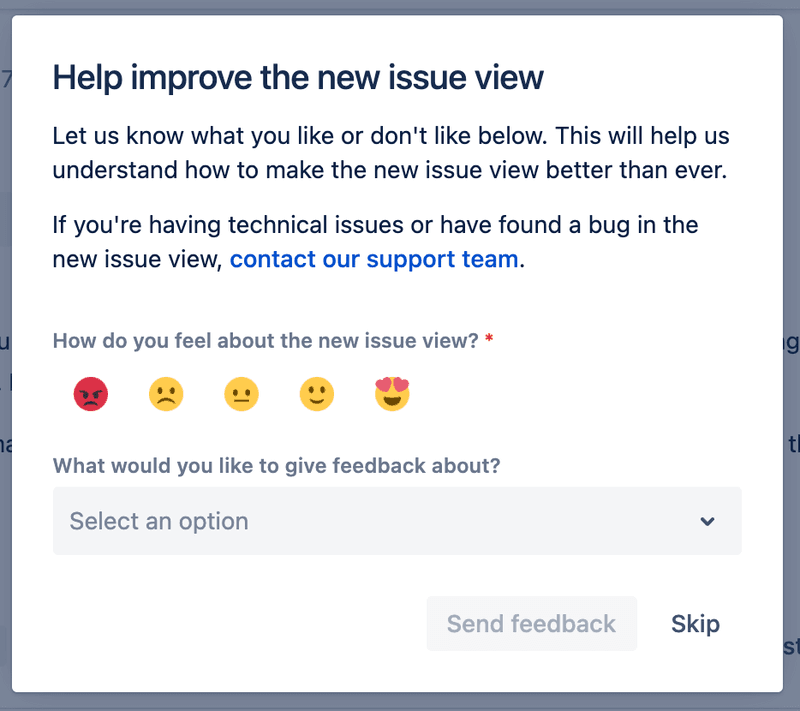
Cancellation survey feedback form templates for understanding why users churn
The last thing you want is for customers to leave or unsubscribe from your product. Below are form templates to help you prevent that from happening by understanding the main reasons behind churn and acting on it.
Userpilot – automated in-app feedback form
Instead of letting customers walk away, Userpilot’s in-app feedback form asks a multiple-choice question to understand their decision as part of our cancelation flow.
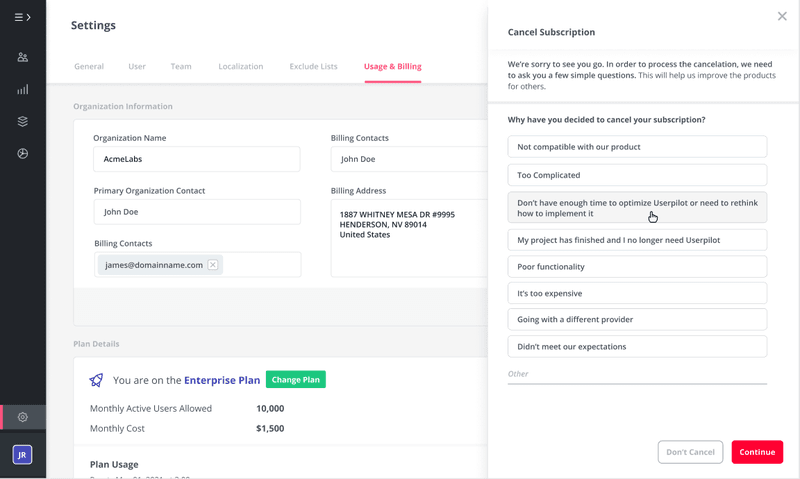
Mixpanel – one-page in-depth feedback form
Product analytics platform Mixpanel offers even more choices for the same question and asks what users will do for analytics moving forward.
This can be a bit overwhelming with so many answer choices, but you should look to include the most common reasons, even if it makes the survey a bit long.
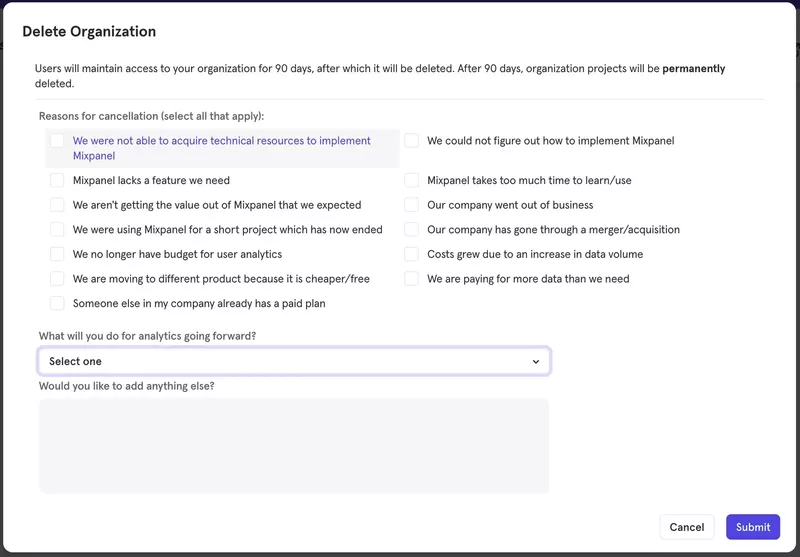
Asana – simple feedback form
Project management tool Asana also asks the same multiple-choice question that users can answer in a second or two to avoid survey fatigue.
Keeping it short and snappy is what works about this.
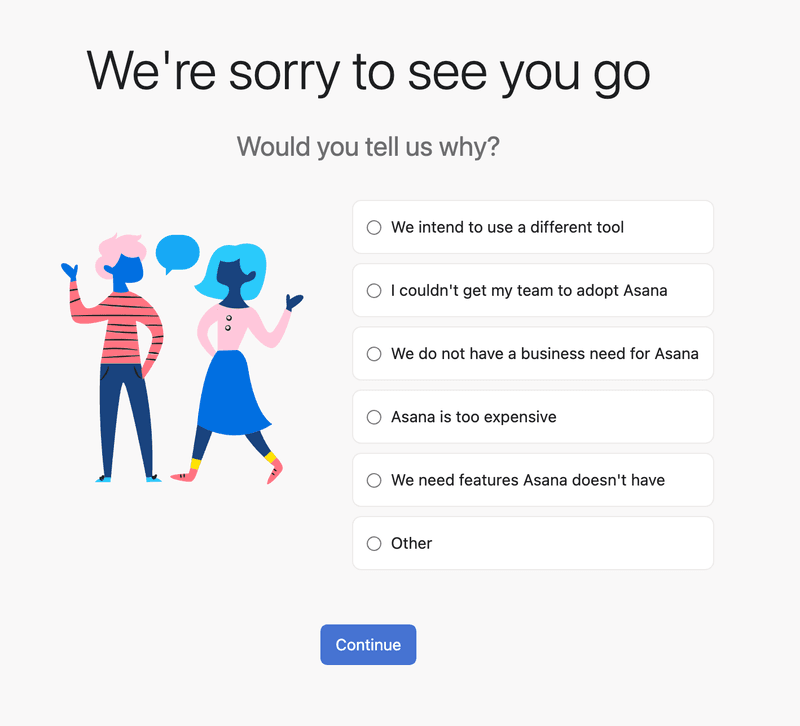
How to create a customer feedback form?
At this point, you should have some ideas for your customer feedback form—are you ready to create some?
Custom coding your feedback form is not the best approach:
- Creating the form takes the development team time they could have used for other tasks.
- You can’t change them or A/B test minor variants without the help of the devs.
- Custom forms are much harder to trigger contextually.
- Analyzing results will be challenging—user feedback will go into a database that you will need to sort and analyze, which takes extra time.
Using a tool will allow you to create the design you want and make sure it reaches the right user segment at the right time. It’s also easier to analyze results.
Use a tool like Userpilot to build and collect feedback in-app
Userpilot makes gathering customer feedback like NPS a breeze with our in-app surveys. Customize and launch in-app surveys of different types to gain insights into the mobile app experience. You can automate processes, such as calculating the score and analyzing the data, so you can get insights on the go.
You can also tag responses and identify recurring themes that correlate with low or high NPS scores. Users can also be grouped into segments based on their feedback.
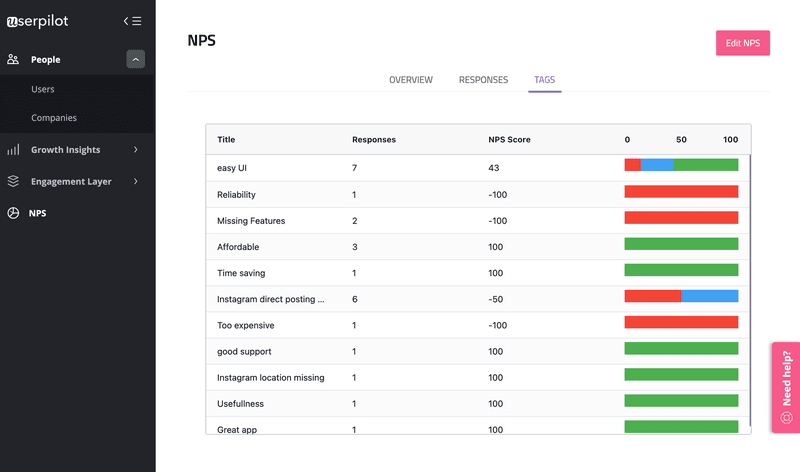
For other types of surveys, you can build microsurveys with multiple-choice and open-ended questions on top of modals, slideouts, and other UI patterns inside the app.
The best part?
You can use the feedback responses and create different user segments that you can use to automate personalized in-app responses.
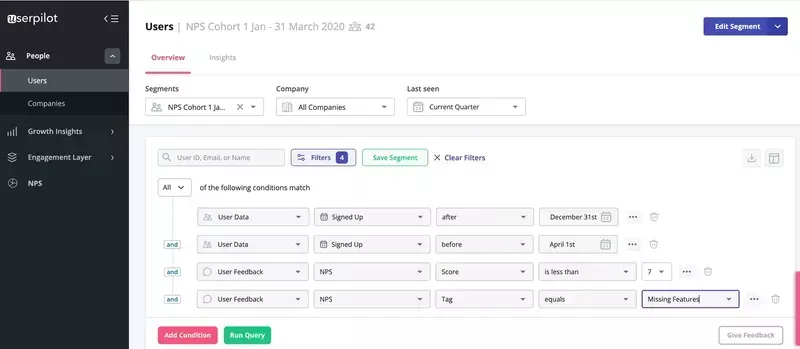
Use Typeform for longer feedback forms
If you need to build a longer survey, we suggest you use Typeform.
You can embed the forms inside your emails or use Userpilot’s direct integration to embed them in-app.
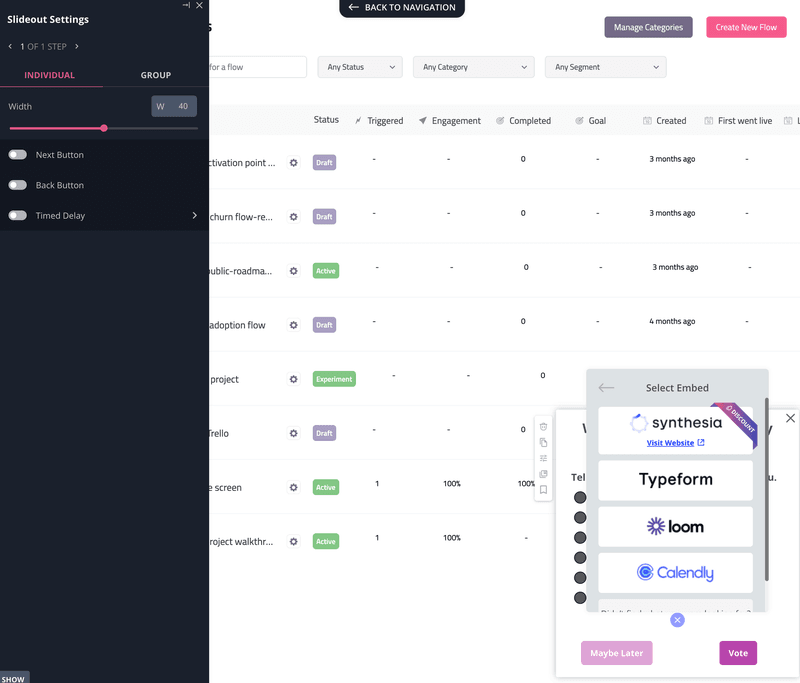
Conclusion
Creating a customer feedback form with a high response rate requires you to ask the best questions on top of making it appear at the right place and time.
You can only create this form type using a tool with these features and the ability to analyze the data, so you don’t have to.
Want to get started with your product feedback form? Get a Userpilot Demo and see how you can create forms your users would love to fill out.





